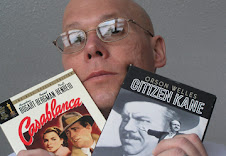
‘Get Low’ suffers from underwritten script
ROBERT DUVALL (left) and Bill Murray in “Get Low.”
“Get Low,” to tell you right off, means to die.
And that’s almost the premise of this film starring Robert Duvall, Sissy Spacek and Bill Murray.
Duvall plays crusty Felix Bush, a real-life hermit in the 1930s for whom legends are made. Everyone had a story about Bush, the fights he got in. The people he supposedly killed.
He lives in a shack with no electricity. Well, it was the Great Depression, lots of people didn’t have electricity.
After a friend died, Bush decides to visit the local church and ask the minister to give him a big funeral while he is still alive.
His idea is to be there and enjoy the event and hear everything people are saying. Bush even shows the pastor a roll of cash.
The pastor declines the offer, but in the church overhearing the discussion is Buddy Robinson, played by Lucas Black. Buddy happens work for the local mortician, Frank Quinn, played by Bill Murray. Frank and Buddy decide to drive out to Bush’s shack and offer to give him the grand sendoff he can live to tell about.
It is an interesting premise, a great cast and it’s one of those pictures you can breath in the authenticity of the 1930s.
Add to the mix Sissy Spacek as Duvall’s former love interest and you have the makings of a compelling story.
Except this film isn’t compelling in any respect and only mildly interesting.
Director Aaron Schneider got all of the elements together except the story. It just sort of plods along.
All of the actors are excellent and they all have original, clearly defined characters, especially Duvall.
But the story is underwritten.
At times it looks like the plot will pick up. Take for instance when the Duvall character goes on a rickety local radio show to discuss his unusual funeral.
Not expected by anyone, the Duvall character announces on the air there will also be a lottery. Send $5 to the funeral home with your name and address. At the funeral, someone’s name will be pulled and win his farm and pristine timber after he dies.
Plus Bush wants to sit back and hear all of the stories people have to tell about his supposed fights and killings.
But there’s a soft side, too. Spacek plays his former love interest who married another and moved away, only to return when her husband died.
The two start talking again, but when the Spacek character sees a worn photo of a woman in his kitchen area, she grabs her things and leaves.
Ah, a mystery? Who is this woman and why did it make Spacek storm off?
OK, that part of the mystery is solved relatively quickly in the movie. It’s Spacek’s sister and although married, she was having an affair with Duvall’s character, while Duvall was supposedly courting Spacek!
Meanwhile, someone smashes a window to get into the funeral home and whams Buddy on the head. Duvall visits another minister a distance apart.
What does this all mean? How does it enter the festivities as everyone gathers on Duvall’s land for the big funeral.
Ah, there’s the rub. The big conclusion is pretty much a dud. Somebody needed to go back to the word processor and work on the script some more.
But good, authentic 30s scenery and a stellar cast makes the film worthy of a rental.
GET LOW
• Directed by Aaron Schneider
• Written by Chris Provenzano and C. Gaby Mitchell
• Rated PG-13 for some thematic material and brief violent content
• Runtime: 100 minutes
• 2 1/2 stars out of 4


















